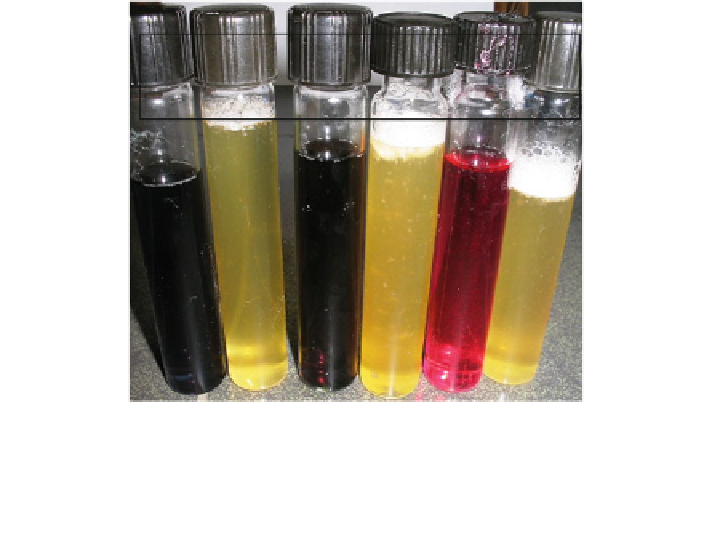Environmental Engineering Reference
In-Depth Information
T1 T2 T3 T4 T5 T6
Fig. 2 Microbial decolorization of textile dyes by Halomonas sp. strain IP8. From left to right
tube T1 contains decolorization medium with remazol black B without inoculums and T2 tube is
the same medium after decolorization with Halomonas sp. strain IP8; tube T3 contains
decolorization medium with remazol black GF without inoculums and T4 tube is the same medium
after decolorization with Halomonas sp. strain IP8 and T5 tube contains Cibacron Red 6B and T6
tube shows decolorization of dye by Halomonas sp. strain IP8
NADH-dependent azoreductase was found to be responsible for the decolorization
of azo dyes, showing optimum range of 8 to 9, and the temperature 80
°
C for
maximum activity (Paar et al.
2001
; Maier et al.
2004
).
8 Conclusion
Proper decolorization of colored wastewater ef
uents of textile industries is a major
environmental concern. Amongst different chemical, physical and biological
treatment methods, the biotechnological approaches based on microorganisms, are
the most effective and environmental friendly methods. Different strains of
microorganisms have shown the ability of textile dye decolorization. One of the
most important factors, which have a great impact on the setting of a proper
bioremediation plant for textile wastewater, is the ef
uent characteristics, high
salinity, temperature and alkalinity. Extremophilic microorganisms and their bio-
active molecules have been found to have a great potential for treatment of textile
wastewaters. Most of researches concerning extremophilic microorganisms for
bioremediation of textile waste waters have focused on their ability in decolor-
ization, but
t been examined properly. Finding the
microbial enzymes and genes responsible for decolorization in extremophilic
microorganisms and using them for bioremediation is a future perspective.
their
nal products haven
'

Search WWH ::

Custom Search